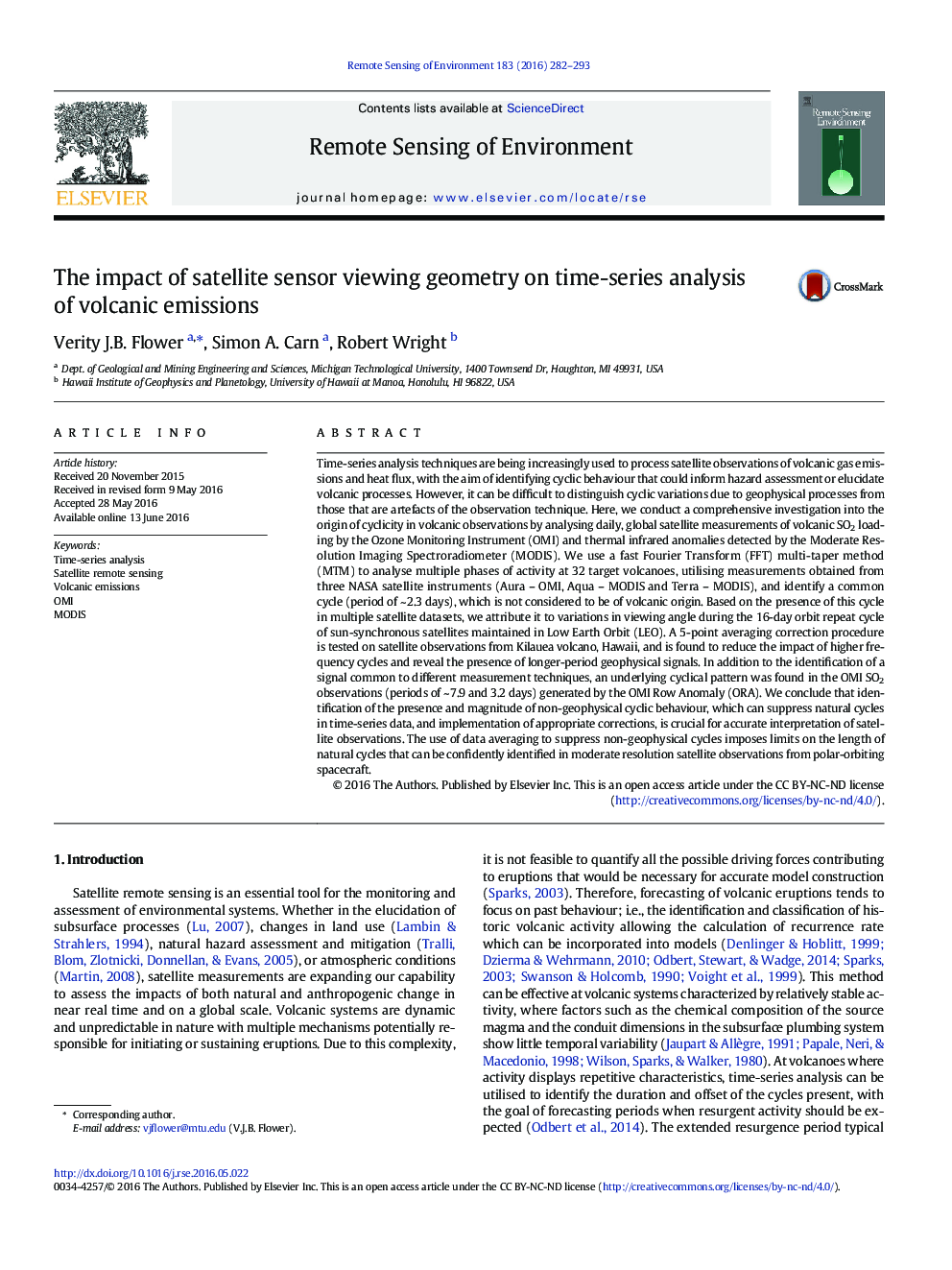| کد مقاله | کد نشریه | سال انتشار | مقاله انگلیسی | نسخه تمام متن |
|---|---|---|---|---|
| 6344968 | 1621217 | 2016 | 12 صفحه PDF | دانلود رایگان |
عنوان انگلیسی مقاله ISI
The impact of satellite sensor viewing geometry on time-series analysis of volcanic emissions
ترجمه فارسی عنوان
تاثیر هندسه مشاهده سنسور ماهواره بر تحلیل سری زمانی انتشار گازهای آتشفشانی
دانلود مقاله + سفارش ترجمه
دانلود مقاله ISI انگلیسی
رایگان برای ایرانیان
کلمات کلیدی
موضوعات مرتبط
مهندسی و علوم پایه
علوم زمین و سیارات
کامپیوتر در علوم زمین
چکیده انگلیسی
Time-series analysis techniques are being increasingly used to process satellite observations of volcanic gas emissions and heat flux, with the aim of identifying cyclic behaviour that could inform hazard assessment or elucidate volcanic processes. However, it can be difficult to distinguish cyclic variations due to geophysical processes from those that are artefacts of the observation technique. Here, we conduct a comprehensive investigation into the origin of cyclicity in volcanic observations by analysing daily, global satellite measurements of volcanic SO2 loading by the Ozone Monitoring Instrument (OMI) and thermal infrared anomalies detected by the Moderate Resolution Imaging Spectroradiometer (MODIS). We use a fast Fourier Transform (FFT) multi-taper method (MTM) to analyse multiple phases of activity at 32 target volcanoes, utilising measurements obtained from three NASA satellite instruments (Aura - OMI, Aqua - MODIS and Terra - MODIS), and identify a common cycle (period of ~Â 2.3Â days), which is not considered to be of volcanic origin. Based on the presence of this cycle in multiple satellite datasets, we attribute it to variations in viewing angle during the 16-day orbit repeat cycle of sun-synchronous satellites maintained in Low Earth Orbit (LEO). A 5-point averaging correction procedure is tested on satellite observations from Kilauea volcano, Hawaii, and is found to reduce the impact of higher frequency cycles and reveal the presence of longer-period geophysical signals. In addition to the identification of a signal common to different measurement techniques, an underlying cyclical pattern was found in the OMI SO2 observations (periods of ~Â 7.9 and 3.2Â days) generated by the OMI Row Anomaly (ORA). We conclude that identification of the presence and magnitude of non-geophysical cyclic behaviour, which can suppress natural cycles in time-series data, and implementation of appropriate corrections, is crucial for accurate interpretation of satellite observations. The use of data averaging to suppress non-geophysical cycles imposes limits on the length of natural cycles that can be confidently identified in moderate resolution satellite observations from polar-orbiting spacecraft.
ناشر
Database: Elsevier - ScienceDirect (ساینس دایرکت)
Journal: Remote Sensing of Environment - Volume 183, 15 September 2016, Pages 282-293
Journal: Remote Sensing of Environment - Volume 183, 15 September 2016, Pages 282-293
نویسندگان
Verity J.B. Flower, Simon A. Carn, Robert Wright,
